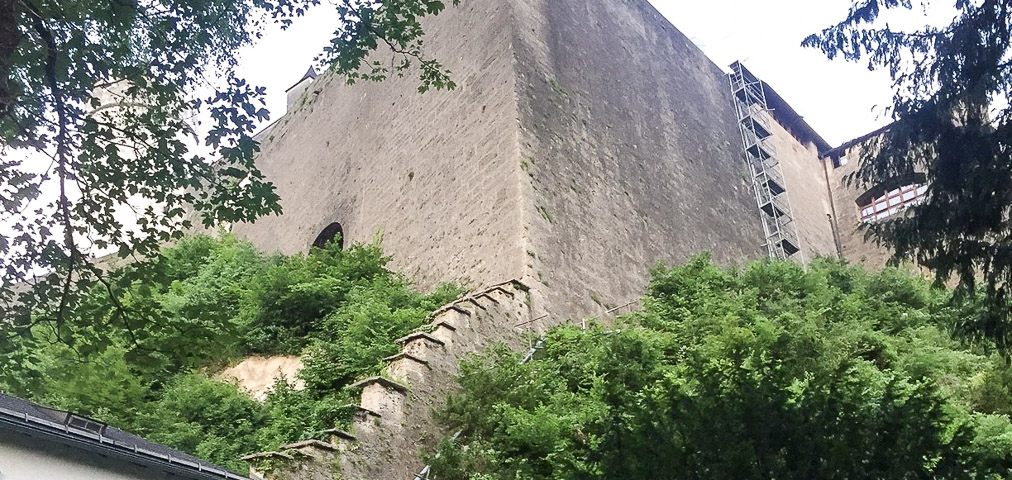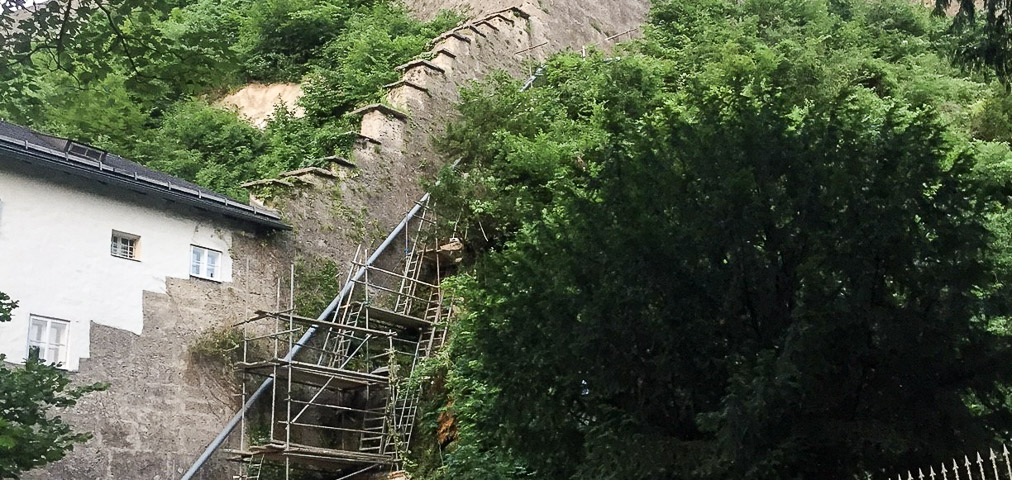Work on the Hohensalzburg Fortress
The Pipeline Construction Department laid a DN 150 dry fire-extinguishing pipeline made of stainless steel along the fortress wall.
The location of this project was quite unusual. The Pipeline Construction Department worked on the spectacular Hohensalzburg fortress and laid a dry fire-extinguishing pipe with feed and tapping points along the fortress wall.
The structural components were transported in several construction phases in a complex manoeuvre through the narrow streets of Salzburg’s old town. A temporary scaffold had to be erected along the fortress wall and assembly was carried out manually at great heights. A total of 110 linear metres of stainless steel pipeline DN 150 were thus installed upwards along the fortress wall. In an emergency, the pipeline can withstand a pressure of up to 16 bar during an extinguishing operation. One small detail: The pipeline was given a dark matt coating to render it as inconspicuous as possible along this famous attraction.
The Hohensalzburg fortress is the emblem of the city of Salzburg. It lies on the Mönchsberg. With over 7,000 m² of built-up area (over 14,000 m² if the bastions are taken into account), Hohensalzburg is one of the largest castles in Europe, its origins dating back to the 11th century. Today it is the largest completely preserved castle in Central Europe and, with over a million visitors a year, the most frequently visited sight in Austria outside Vienna. The Hohensalzburg fortress is only surpassed in terms of visitors by Schönbrunn Palace and Zoo in Vienna.
The structural components were transported in several construction phases in a complex manoeuvre through the narrow streets of Salzburg’s old town. A temporary scaffold had to be erected along the fortress wall and assembly was carried out manually at great heights. A total of 110 linear metres of stainless steel pipeline DN 150 were thus installed upwards along the fortress wall. In an emergency, the pipeline can withstand a pressure of up to 16 bar during an extinguishing operation. One small detail: The pipeline was given a dark matt coating to render it as inconspicuous as possible along this famous attraction.
The Hohensalzburg fortress is the emblem of the city of Salzburg. It lies on the Mönchsberg. With over 7,000 m² of built-up area (over 14,000 m² if the bastions are taken into account), Hohensalzburg is one of the largest castles in Europe, its origins dating back to the 11th century. Today it is the largest completely preserved castle in Central Europe and, with over a million visitors a year, the most frequently visited sight in Austria outside Vienna. The Hohensalzburg fortress is only surpassed in terms of visitors by Schönbrunn Palace and Zoo in Vienna.

